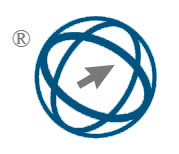Biometric-Based Secure Encryption Key Generation Using Convolutional Neural Networks and Particle Swarm Optimization
Abstract
With the rapid expansion of computer networks and information technology, ensuring secure data transmission is increasingly vital—especially for image data, which often contains sensitive information. This research presents a biometric-based encryption system that uses fingerprint recognition and deep learning to generate strong, random encryption keys. Two convolutional neural networks (CNNs) are employed: one to verify identity based on a user’s ID and another to extract fingerprint features for key generation. These keys are optimized using Particle Swarm Optimization (PSO), enhancing their randomness and resistance to brute-force attacks. The system generates keys in real-time, eliminating the need for storage and minimizing the risk of theft or leakage. To further improve security, encryption keys are automatically updated after every ten messages, with different keys generated from multiple fingerprints of the same individual. Testing with the SOCOFing dataset (6,000 original and 49,270 synthetic images) achieved 99.75% identity verification and 99.83% classification accuracy. Performance metrics—entropy of 7.89, correlation factor of 0.00628, and zero repetition—demonstrate high robustness. This approach offers a secure, adaptive, and personalized encryption method ideal for sensitive domains like finance and healthcare.
Full Text:
PDFReferences
Hosny, K. M., Darwish, M. M., & Fouda, M. M. (2021). Robust color images watermarking using new fractional-order exponent moments. IEEE Access, 9, 47425–47435. https://doi.org/10.1109/ACCESS.2021.3069317
Kuzior, A., Tiutiunyk, I., Zielińska, A., & Kelemen, R. (2024). Cybersecurity and cybercrime: Current trends and threats. Journal of International Studies, 17(2). https://doi.org/10.14254/2071-8330.2024/17-2/5
Saran, D. G., & Jain, K. (2023). An improvised algorithm for a dynamic key generation model. In Inventive Computation and Information Technologies: Proceedings of ICICIT 2022 (pp. 607–627). Springer Nature Singapore. https://doi.org/10.1007/978-981-19-5048-5_44
Rahman, Z., Yi, X., Billah, M., Sumi, M., & Anwar, A. (2022). Enhancing AES using chaos and logistic map-based key generation technique for securing IoT-based smart home. Electronics, 11(7), 1083. https://doi.org/10.3390/electronics11071083
Kuznetsov, O., Zakharov, D., & Frontoni, E. (2024). Deep learning-based biometric cryptographic key generation with post-quantum security. Multimedia Tools and Applications, 83(19), 56909–56938. https://doi.org/10.1007/s11042-023-15265-6
Yang, W., Wang, S., Cui, H., Tang, Z., & Li, Y. (2023). A review of homomorphic encryption for privacy-preserving biometrics. Sensors, 23(7), 3566. https://doi.org/10.3390/s23073566.
Rana, M., Mamun, Q., & Islam, R. (2023). Enhancing IoT security: An innovative key management system for lightweight block ciphers. Sensors, 23(18), 7678. https://doi.org/10.3390/s23187678
Hashem, M. I., & Kuban, K. H. (2023). Key generation method from fingerprint image based on deep convolutional neural network model. Nexo Revista Científica, 36(6), 906-925. https://doi.org/10.5377/nexo.vXXiXX.XXXX
Erkate, U., Toktas, A., Enginoglu, S., Karabacak, E., & Thanh, D. N. H. (2024). An image encryption scheme based on chaotic logarithmic map and key generation using deep CNN. Expert Systems with Applications, 237, 121452. https://doi.org/10.1016/j.eswa.2023.121452
Quinga Socasi, F., Zhinin-Vera, L., & Chang, O. (2020). A deep learning approach for symmetric key cryptography system. In Proceedings of the Future Technologies Conference (pp. 41). https://link.springer.com/chapter/10.1007/978-3-030-63128-4_41
Wu, Z., Lv, Z., Kang, J., Ding, W., & Zhang, J. (2022). Fingerprint bio-key generation based on a deep neural network. International Journal of Intelligent Systems, 37(7), 4329–4358.
https://doi.org/10.1002/int.22782
Alesawy, O., & Muniyandi, R. C. (2016). Elliptic Curve Diffie-Hellman random keys using artificial neural network and genetic algorithm for secure data over private cloud. Information Technology Journal, 15(2), 77-83. https://doi.org/10.3923/itj.2016.77.83
Saini, A., & Sehrawat, R. (2024). Enhancing data security through machine learning-based key generation and encryption. Engineering, Technology & Applied Science Research, 14(3), 14148-14154. https://doi.org/10.48084/etasr.7181
Kurtninykh, I., Ghita, B., & Shiaeles, S. (2021). Comparative analysis of cryptographic key management systems. King's College London, Strand, London,WC2R 2LS, UK. https://doi.org/10.48550/arXiv.2109.09905.
SSL Support Team. (2024, May 3). Key management best practices: A practical guide. Retrieved from [SSL Support Team Website] https://www.ssl.com/article/key-management-best-practices-a-practical-guide//
Jain, J. (2020, October 13). The ultimate guide to encryption key management. Retrieved from Infosec Institute
Tu, Z., Milanfar, P., & Talebi, H. (2023). MULLER: Multilayer Laplacian Resizer for Vision. ResearchGate. Retrieved from https://www.researchgate.net/publication/369855623_MULLER_Multilayer_Laplacian_Resizer_for_Vision.
Saifullah, S., Pranolo, A., & Dreżewski, R. (2024). Comparative analysis of image enhancement techniques for brain tumor segmentation: Contrast, histogram, and hybrid approaches. Journal Name, Volume(Issue), Page range. https://doi.org/10.48550/arXiv.2404.05341
Singh, P., Dutta, S., & Pranav, P. (2024). Optimizing GANs for Cryptography: The Role and Impact of Activation Functions in Neural Layers Assessing the Cryptographic Strength. Applied Sciences, 14(6), 2379. https://doi.org/10.3390/app14062379.
Zhang, B., & Liu, L. (2023). Chaos-Based Image Encryption: Review, Application, and Challenges. Mathematics, 11(11), 2585. https://doi.org/10.3390/math11112585
Taylor, O. E., & Igiri, C. G. (2024). Enhancing image encryption using histogram analysis, adjacent pixel autocorrelation test in chaos-based framework. International Journal of Computer Applications, 186(22). https://doi.org/10.5120/ijca202492338
Munshi, N. H., Das, P., & Maitra, S. (2022). Chi-Squared Test Analysis on Hybrid Cryptosystem. Volume 14, Issue 1, 34-40. https://doi.org/10.2174/1876402913666210508235706.
Rasheed, A. F., Zarkoosh, M., & Abbas, S. (2023, October). Comprehensive Evaluation of Encryption Algorithms: A Study of 22 Performance Tests. 2023 Sixth International Conference on Vocational Education and Electrical Engineering (ICVEE), Surabaya, France, 191-194. https://doi.org/10.1109/ICVEE59738.2023.10348240.
Feng, L., Du, J., & Fu, C. (2023). Double graph correlation encryption based on hyperchaos. PLOS ONE, 18(9), e0291759. https://doi.org/10.1371/journal.pone.0291759.
Barker, E., & Roginsky, A. (2024). NIST SP 800-131A Rev. 3: Transitioning the use of cryptographic algorithms and key lengths (Initial Public Draft). National Institute of Standards and Technology. https://doi.org/10.6028/NIST.SP.800-131Ar3.ipd.
Avaroğlu, E., Kahveci, S., & Akkurt, R. (2024). Optimization of Acoustic Entropy Source for Random Sequence Generation Using an Improved Grey Wolf Algorithm. Computer Engineering Department, Faculty of Engineering, Mersin University. https://doi.org/10.18280/ts.410220
Foreman, C., Yeung, R., & Curchod, F. J. (2024). Statistical testing of random number generators and their improvement using randomness extraction. Cryptology ePrint Archive, Paper 2024/492. Retrieved from https://eprint.iacr.org/2024/492
Taylor, O. E., & Igiri, C. G. (2024). Enhancing image encryption using histogram analysis, adjacent pixel autocorrelation test in chaos-based framework. International Journal of Computer Applications, 186(22). https://doi.org/10.5120/ijca2024923653
DOI: https://doi.org/10.31449/inf.v49i16.7779

This work is licensed under a Creative Commons Attribution 3.0 License.









